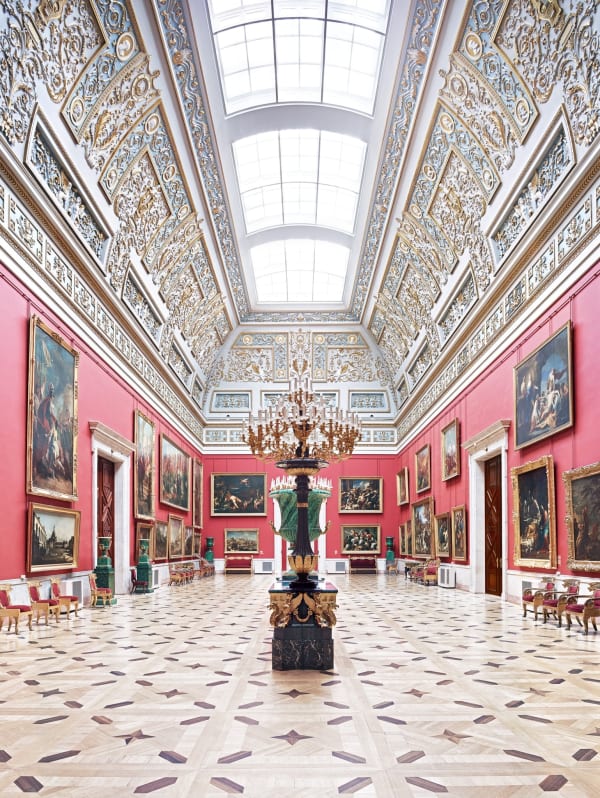CANDIDA HÖFER: Memory: Selected works from The State Hermitage Museum exhibition 2015
After receiving critical acclaim at the State Hermitage Museum this summer, Candida Höfer's latest series, Memory (2014) - capturing the splendour of St Petersburg and its magnificent buildings - will travel to Ben Brown Fine Arts in October. The exhibition will focus on ten carefully selected works, never before seen in the UK.
The Hermitage Museum, Pushkin Palace, Catherine Palace Pushkin, Mariinsky Theatre, as well as the palaces of Pavlovsk and Yusupov theatre provide the glorious setting for this new series produced in the summer of 2014, closely following Höfer's previous work in Central and Southern Italy. The empty interiors of palaces, opera houses, libraries and theatres, are part of the artist's meticulous and skilful documentation of public spaces which have brought her widespread recognition. Through her lens, Höfer captures mankind's greatness - extraordinary buildings and architecture associated with cultural memory and people - yet her spaces are consistently devoid of human presence. For her, 'an absent guest is often the subject of a conversation'. Here the architecture takes centre stage, losing its attribute of public space, a space created for man, to become an idealised image that could not exist in the public sphere, a world where man has no place.
As curator Nadezda Sinyutina from the State Hermitage Museum puts it, 'by drawing us into the inaccessible, strange and private life of public spaces and breaking through our inherent difficulties in the perception of architecture, Höfer's photographs return to public spaces the aura of unique works of art'.
Candida Höfer produces these large-format photographs without digital enhancement or alteration, using long exposure and working solely with the existing light source. The effect is a rare combination of intimacy and scale, in which intricate architectural detail is captured without sacrificing the sense of space and civilised order.
Höfer is a member of the Düsseldorf School (Kunstakademie Düsseldorf) and was a noted pupil of the Bechers, who were heavily influenced by the 1920s German art tradition of Neue Sachlichkeit and pioneered a type of detached objectivity.The Bechers' black and white photographs of industrial landscapes and architecture embodied a clinical, documentary style, which Höfer has retained in her work through the same neutral and methodical process. Yet Höfer's large-scale colour prints differ in their more sympathetic approach to the building's culture and history.













